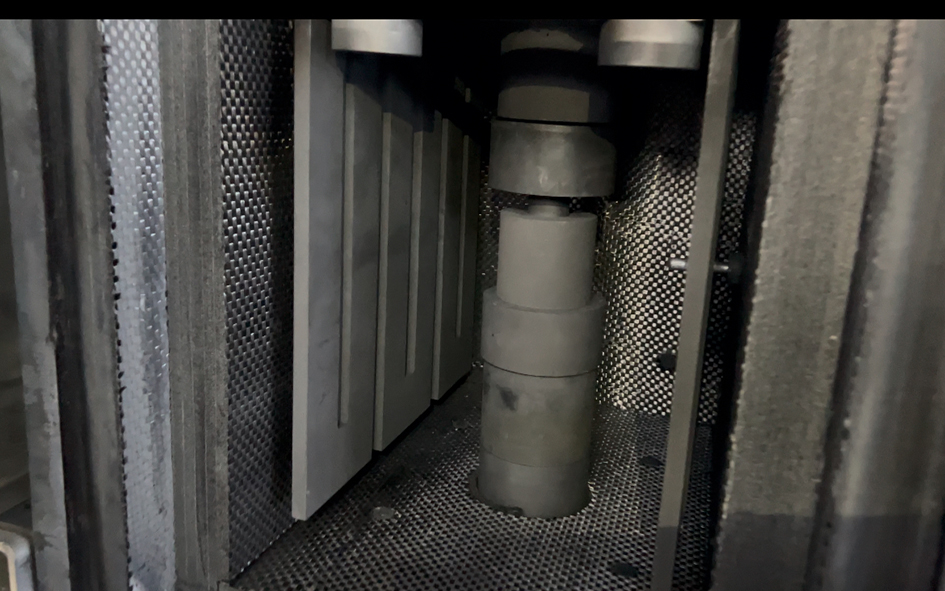Objective: Obtain high-purity, fine alumina powder suitable for sintering.
Details:
Start with high-purity aluminum oxide powder (typically >99.5% purity) to avoid impurities that could affect the final properties.
Particle size is critical—usually in the range of 0.1 to 1 micrometer—to ensure good packing and sintering behavior.
The powder may be synthesized via methods like the Bayer process or chemical precipitation, followed by milling (e.g., ball milling) to achieve uniform particle size.
Additives (optional): Small amounts of sintering aids like magnesium oxide (MgO, <0.5 wt%) may be mixed in to inhibit grain growth and enhance densification.
Process: Dry or wet milling is used, followed by drying (if wet) to remove moisture. The powder is then sieved to remove agglomerates.
Objective: Prepare the powder for pressing by ensuring it’s free-flowing and uniform.
Details:
The powder is often granulated using a spray-drying process to form spherical agglomerates, improving flowability and packing efficiency.
If binder or lubricant is added (e.g., polyvinyl alcohol), it helps with green body formation but must be removed later.
The conditioned powder is stored in a dry environment to prevent moisture absorption, which could lead to defects during sintering.
Objective: Place the powder into a mold for hot pressing.
Details:
A high-temperature-resistant die, typically made of graphite (for its thermal stability and lubricity), is used. Other materials like boron nitride or refractory metals may be alternatives depending on temperature and atmosphere.
The die is cleaned and coated with a release agent (e.g., boron nitride spray) to prevent sticking of the sintered alumina.
The alumina powder is carefully loaded into the die cavity, ensuring even distribution to avoid density gradients. Tapping or gentle vibration may be used to settle the powder.

Objective: Form a “green body” with sufficient strength for handling.
Details:
The powder in the die is subjected to low uniaxial pressure (e.g., 5–20 MPa) at room temperature using a hydraulic press.
This step reduces the initial volume, removes large voids, and creates a compact with ~50–60% of theoretical density.
Care is taken not to over-press, as this could trap air or cause cracking.
Objective: Densify the alumina by applying heat and pressure simultaneously.
Details:
Pressure is applied gradually as the temperature rises, reaching full load (e.g., 30 MPa) near the peak temperature.
The uniaxial pressure aids diffusion, closes pores, and promotes particle bonding.
Heat gradually (e.g., 5–10°C/min) to avoid thermal shock to the die or powder compact.
If binders were used, a hold at 300–500°C allows their burnout (debinding) without cracking the green body.
Equipment: The die assembly is placed in a hot press furnace capable of high temperatures (up to 1600–1800°C) and pressures (20–50 MPa).
Atmosphere: Sintering is typically done in an inert atmosphere (e.g., argon or nitrogen) or vacuum to prevent oxidation of the die and contamination of the alumina. Air can be used if graphite is avoided.
Temperature Ramp:
Sintering Temperature: Typically 1400–1600°C, depending on particle size and desired density. Higher temperatures (>1600°C) may be used for ultra-fine powders but risk excessive grain growth.
Pressure Application:
Hold Time: The sample is held at peak temperature and pressure for 1–4 hours, allowing densification to >98% of theoretical density (3.98 g/cm³ for pure alumina).
Mechanism: Densification occurs via diffusion (grain boundary and lattice diffusion) and plastic deformation under pressure, reducing porosity significantly compared to pressureless sintering.
Objective: Cool the sintered part without introducing thermal stresses or cracks.
Details:
Pressure is gradually released as the temperature drops to prevent stress buildup.
Cooling rate is controlled (e.g., 5–10°C/min) to room temperature. Too rapid cooling can cause cracking due to alumina’s low thermal shock resistance.
The furnace is maintained in an inert atmosphere during cooling to protect the die and sample.
Objective: Extract the sintered alumina part from the die.
Details:
Once cooled, the die is disassembled, and the sintered alumina compact is removed.
If sticking occurs, gentle tapping or a hydraulic ejector may be used. The release agent applied earlier aids in this step.
The part may have a thin layer of die residue (e.g., carbon from graphite), which is cleaned off later.
Objective: Refine the sintered part for final use.
Details:
Surface Cleaning: Residual carbon or release agent is removed via light sanding, ultrasonic cleaning, or a brief heat treatment in air (e.g., 800°C) to burn off carbon.
Machining: If precise dimensions are needed, diamond tools are used to grind or cut the alumina, as it’s now extremely hard (Mohs hardness ~9).
Polishing: For optical or wear-resistant applications, the surface may be polished to a mirror finish using diamond paste.
Inspection: The part is checked for density (e.g., Archimedes’ method), microstructure (via SEM), and mechanical properties (e.g., hardness, fracture toughness).
Temperature: 1400–1600°C (fine-tuned based on powder and goals).
Pressure: 20–50 MPa (higher pressures increase density but may strain equipment).
Time: 1–4 hours at peak conditions.
Grain Size: Controlled by temperature and additives; smaller grains (<1–2 µm) enhance strength.
Density: Target >98% theoretical density for optimal properties.
The result is a dense, strong alumina ceramic with excellent properties:
High hardness (Vickers ~15–20 GPa).
Thermal stability up to ~1700°C.
Low porosity (<2%).
Applications: Cutting tools, wear-resistant parts, electrical insulators, or biomedical implants.